Species by species, it is all falling into place
“I feel that once you’re swimming amongst the kelp, and once you know just how precious and important these ecosystems are, you’ll start to consider this a place of hope, even worship. You’ll start to feel gratitude with each dive.”
– Chaitanya Katharoyan
Among the most enjoyable yet challenging work in the pursuit of discovering 1001 Seaforest Species has been the exploration of kelp holdfasts. Kelp plants lack functional roots, sourcing nutrients directly from surrounding seawater. However, they require a sturdy holdfast to withstand powerful waves.
I have long admired these holdfasts, and I would imagine the creatures inhabiting these intricate ‘root-like’ structures. One day, I was speaking to my friend Dr. Nasreen Peer, a lecturer at Stellenbosch University, and she proposed studying the invertebrate biodiversity of kelp holdfasts as a student project. I needed no convincing and it was the start of our journey.
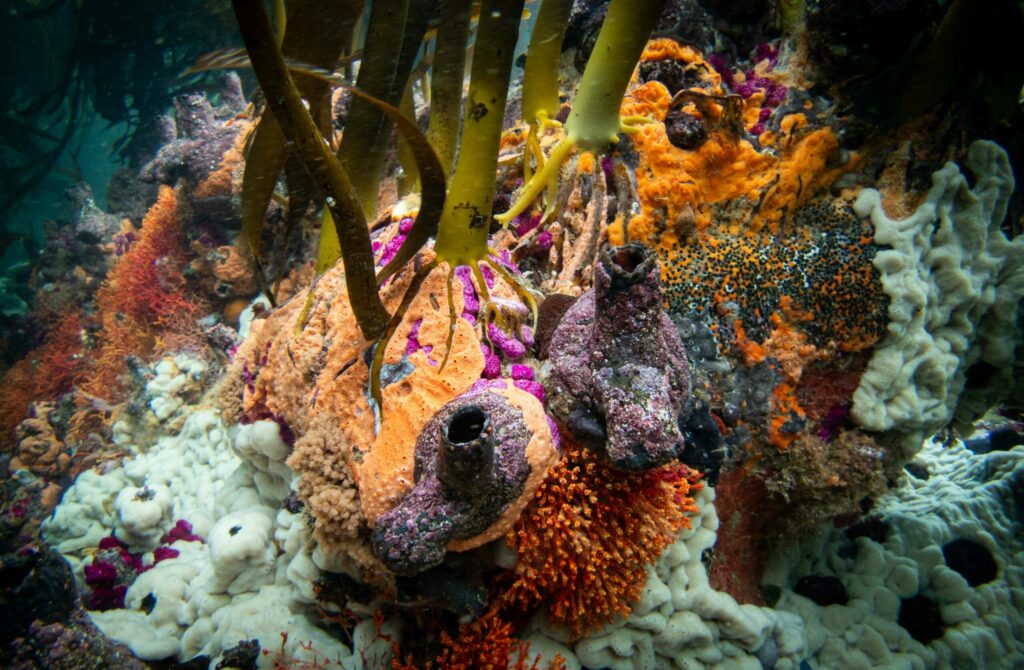
Holdfasts of the Bamboo kelp Ecklonia maxima are overgrown by benthic invertebrate and provide a three-dimensional, internal habitat for thousands of animals. Photo © Jannes Landschoff.
Some weeks later I was diving with Nasreen and our new student, Chaitanya Katharoyan, to collect holdfasts. Chaitanya was still new to diving, new to field work too – an upcoming biologist. I remember the first days in the field as a blend of excitement and challenge. The expanse of water held an element of trepidation, amplified by Cape Town’s demanding sea conditions. With collecting equipment in our hands and the pressure to collect data, it was good to have each other’s support. As we dived deeper into the environment, a strong connection with the seaforest started to unfold.
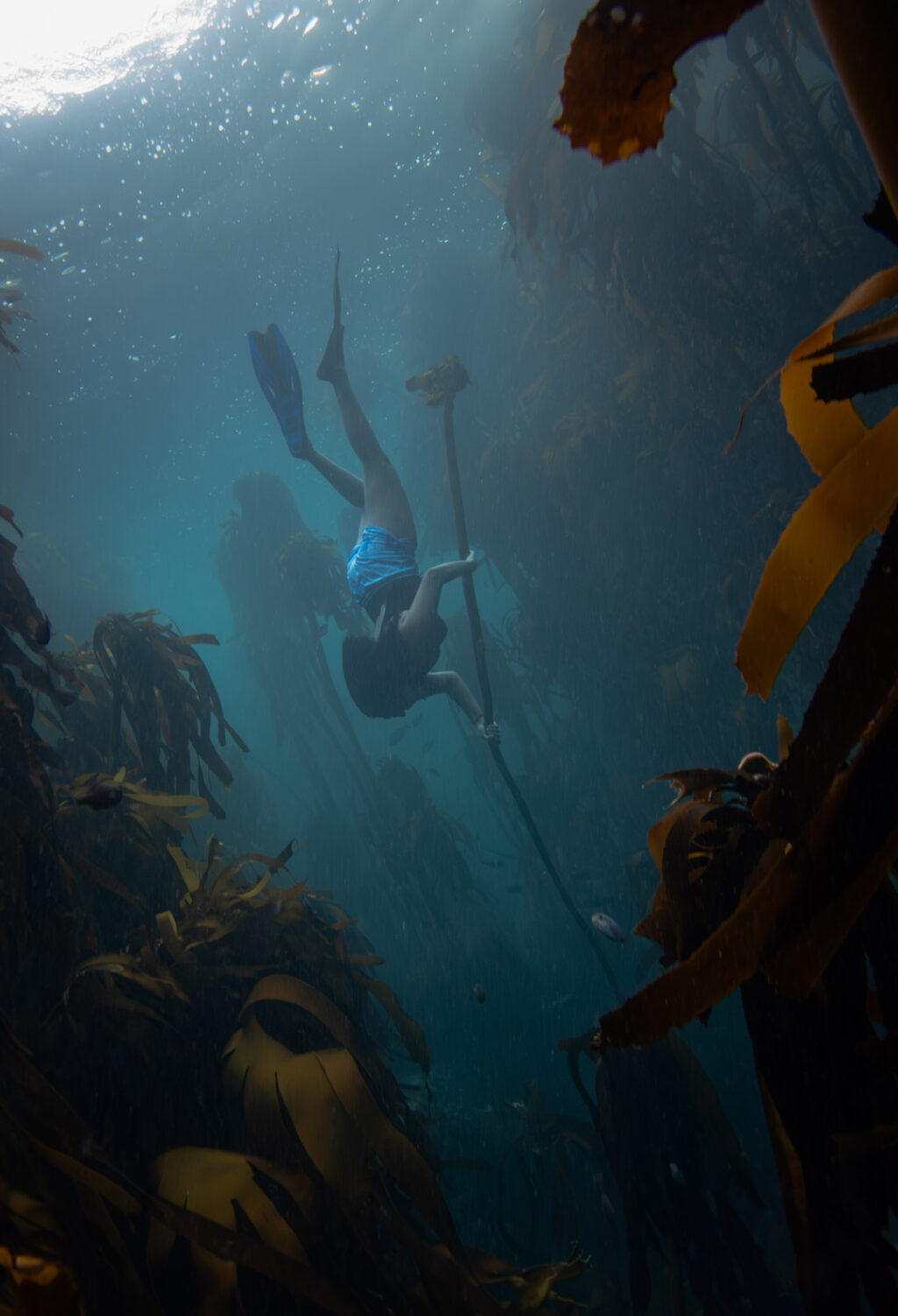
A safe way of learning to dive deeper is to gently pull yourself down on a Bamboo kelp stipe. The holdfast at the bottom firmly attaches the kelp plant to the seafloor. Photo © Jannes Landschoff
Chaitanya reminisces: “My favourite experience was my first dive without a wetsuit in Gansbaai. The water was ice, but in a refreshing way. This started my new journey of diving ‘wetsuitless’. I don’t think I’ve used a wetsuit again…”
Yet, diving was a fraction of the effort. Post-dive, sorting organisms alongside volunteers was vital. We collected 10 holdfasts from each of four sites and endured extensive processing, identifying, and counting of hundreds, thousands of creatures. I really learned to appreciate a new dimension of diversity here! These holdfasts were crazy! Chaitanya humbly reflects the greatest challenge was “…bringing my focus to individual groups and trying not to feel overwhelmed by just how much life is found in a single kelp holdfast.”
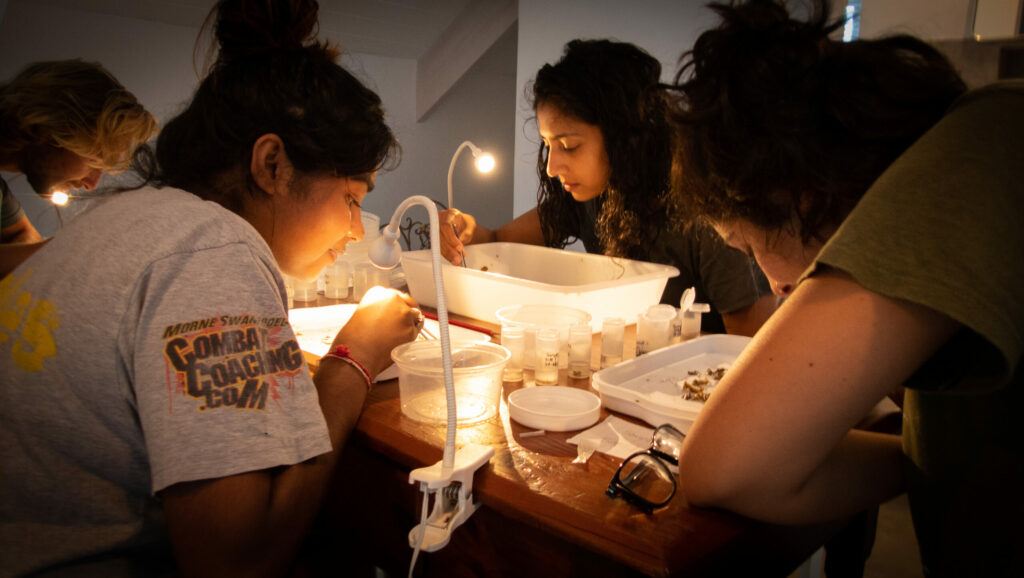
The team spent many hours sorting through all the organisms. Photo © Jannes Landschoff
Accurate, consistent species identification proved tough. Another challenge was that the South African field guides, if they exist, can be outdated, often not well illustrated and hence not very practical to use in the field. (We are improving this through the 1001 project, especially with the help of Emer. Prof Charles Griffiths). So, we ended up having hundreds of species we weren’t sure what they were. I felt frustrated, overwhelmed. I felt like I let Chaitanya down. At times it all felt like a big failure.
Nonetheless, Chaitanya embraced the challenge and became a true source of inspiration. “I enjoyed identifying the animals through my new taxonomic skills. It’s like being a kid again, and solving puzzles, only you are looking at this wonderfully strange creature and trying to figure out just how they live their lives in a holdfast,” Chaitanya continues. “There were times where I struggled more physically than mentally. You’re sitting behind a microscope for more than 12 hours a day and you’ve probably only identified 10 organisms.”
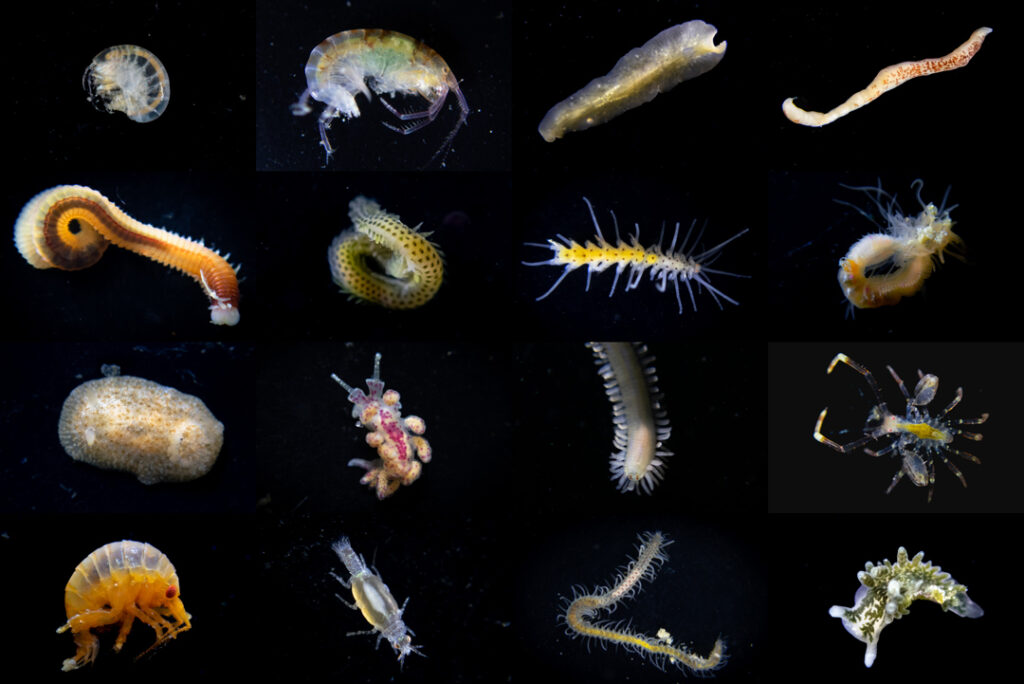
Most of the animals that live in the holdfasts are polychaete worms and small crustaceans, but there are few groups of animals that don’t live in this hyper-diverse space. We also found nudibranchs, flatworms, Ribbon worms, and many more. These are only a very few examples from one holdfast. Photos © Jannes Landschoff
Ultimately, our collective efforts prevailed, and we conducted ecological analyses based on family-level identification rather than delving into species specifics. Chaitanya’s meticulous work uncovered approximately 120 distinct invertebrate families, a notably substantial number, and useful to know. This accumulation of data now serves as a vital foundation for future work, spotlighting the hyper-diverse nature of holdfasts within the Great African Seaforest.
Furthermore, this knowledge holds immeasurable value in enhancing our comprehension of this expansive ecosystem, consequently guiding decisions pertaining to its management and conservation. However, there’s an additional element to this project that stirs my passion, which is the transformation the work with nature provides. The journey we went on is my personal reminder that the seaforest really is the ultimate teacher and greatest mentor. Chaitanya’s quote below couldn’t summarize better why we are doing this work.
“The seaforest means so much to me now. The project has taught me that nothing is impossible, especially with a great team. This project demanded multiple collaborations which I am grateful for. The seaforest for me holds so much power and magic. When I need to calm my mind or heal my body, I turn to the seaforest. This project has made me more aware during my dives, allowing me to notice the smaller, yet sometimes more significant creatures.”
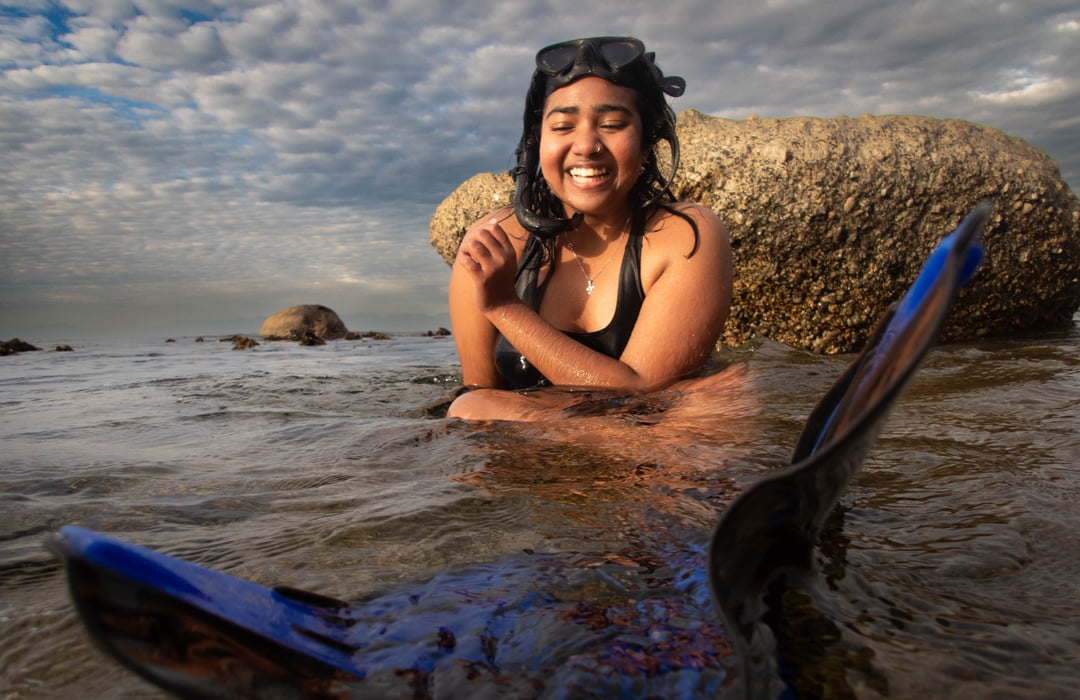
Chaitanya after a dive. Photo © Jannes Landschoff
Acknowledgements:
To inform the 1001 Seaforest Species project funded through the Save Our Seas Foundation, this work forms part of a larger research collaboration between Stellenbosch University and Sea Change Project. Running costs for student projects are also covered through the NRF-FBIP Small Grant No. FBIS22101863331 “Holdfast-associated invertebrate diversity in South Africa’s kelp forests”, principal grant holder Dr. Nasreen Peer (Stellenbosch University), co-investigators Dr. Jannes Landschoff (Stellenbosch University) and Dr. Koebraa Peters (Cape Peninsula University of Technology).
